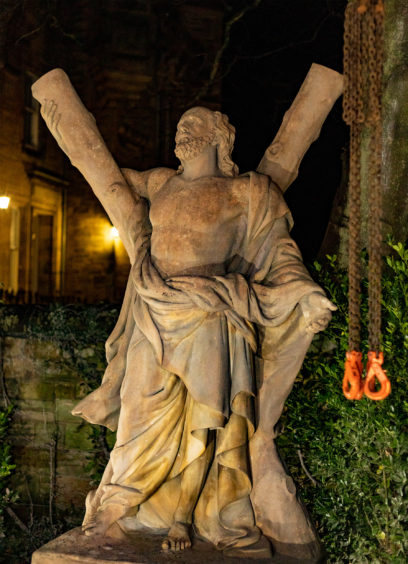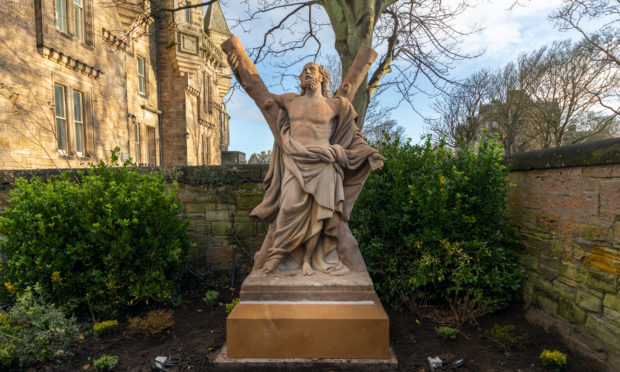A fully-restored statue of Scotland’s patron saint has taken pride of place in St Andrews, a year after it was rescued from its former home.
The larger than life-size statue of St Andrew by world-renowned sculptor Sir John Steell lived modestly in the shrubbery at the town’s Botanic Gardens car park for four decades, where it mysteriously lost its left hand.
Following an unsuccessful appeal to find the missing part last year, the statue, a copy of the sculpture by Francois Duquesnoy which sits in St Peter’s Basilica in Rome, underwent extensive conservation to restore it to its former glory.
It has now been given pride of place at the entrance of the Wardlaw Museum on The Scores in time for St Andrews Day on Saturday.
Thought to have been created in the 1830s, the piece was gifted to St Andrews University by an insurance company more than 50 years ago.

Steell became revered after being appointed Sculptor in Ordinary by Queen Victoria in 1838.
He worked with his father from studios in Edinburgh and his first major piece was a huge timber statue of St Andrews, commissioned by the North British Insurance Company.
He later travelled to Rome to study sculpture more intensely before creating his stone version of the saint, which is now found in St Andrews.
Dr Katie Stevenson, vice-principal of the university’s collections, music and digital content, who led the restoration project, said: “The restoration and conservation of such a historically important sculpture will allow generations to enjoy it for years to come.
“We are delighted that during the restoration out team were able to confirm the added discovery that the statue of St Andrews is an original piece by Sir John Steell, which makes it even more significant not only to the university but to our understanding of the development of Scottish art in the 19th century.”
Before it came to the university in the 1960s, St Andrews sat in the foyer of the North British and Mercantile Insurance Company building in Edinburgh and as members of staff came in to work they touched his fingers to bring them luck.
Museums director Katie Eagleton added: “Steell is credited with introducing large-scale marble carving into Scotland.
“We are pleased to be able to restore this wonderful statue and we hope that his new home in the gardens of the Wardlaw Museum will allow people to enjoy him as never before.”





